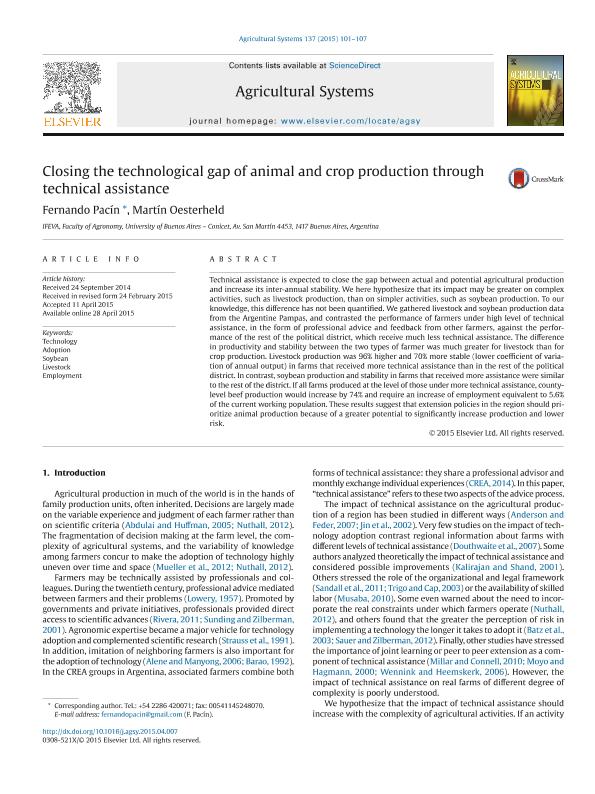Artículo
Closing the technological gap of animal and crop production through technical assistance
Fecha de publicación:
04/2015
Editorial:
Elsevier
Revista:
Agricultural Systems
ISSN:
0308-521X
Idioma:
Inglés
Tipo de recurso:
Artículo publicado
Clasificación temática:
Resumen
Technical assistance is expected to close the gap between actual and potential agricultural production and increase its inter-annual stability. We here hypothesize that its impact may be greater on complex activities, such as livestock production, than on simpler activities, such as soybean production. To our knowledge, this difference has not been quantified. We gathered livestock and soybean production data from the Argentine Pampas, and contrasted the performance of farmers under high level of technical assistance, in the form of professional advice and feedback from other farmers, against the performance of the rest of the political district, which receive much less technical assistance. The difference in productivity and stability between the two types of farmer was much greater for livestock than for crop production. Livestock production was 96% higher and 70% more stable (lower coefficient of variation of annual output) in farms that received more technical assistance than in the rest of the political district. In contrast, soybean production and stability in farms that received more assistance were similar to the rest of the district. If all farms produced at the level of those under more technical assistance, county-level beef production would increase by 74% and require an increase of employment equivalent to 5.6% of the current working population. These results suggest that extension policies in the region should prioritize animal production because of a greater potential to significantly increase production and lower risk.
Palabras clave:
Technology
,
Adoption
,
Soybean
,
Livestock
,
Employment
Archivos asociados
Licencia
Identificadores
Colecciones
Articulos(IFEVA)
Articulos de INST.D/INV.FISIOLOGICAS Y ECO.VINCULADAS A L/AGRIC
Articulos de INST.D/INV.FISIOLOGICAS Y ECO.VINCULADAS A L/AGRIC
Citación
Pacín, Fernando; Oesterheld, Martin; Closing the technological gap of animal and crop production through technical assistance; Elsevier; Agricultural Systems; 137; 4-2015; 101-107
Compartir
Altmétricas




